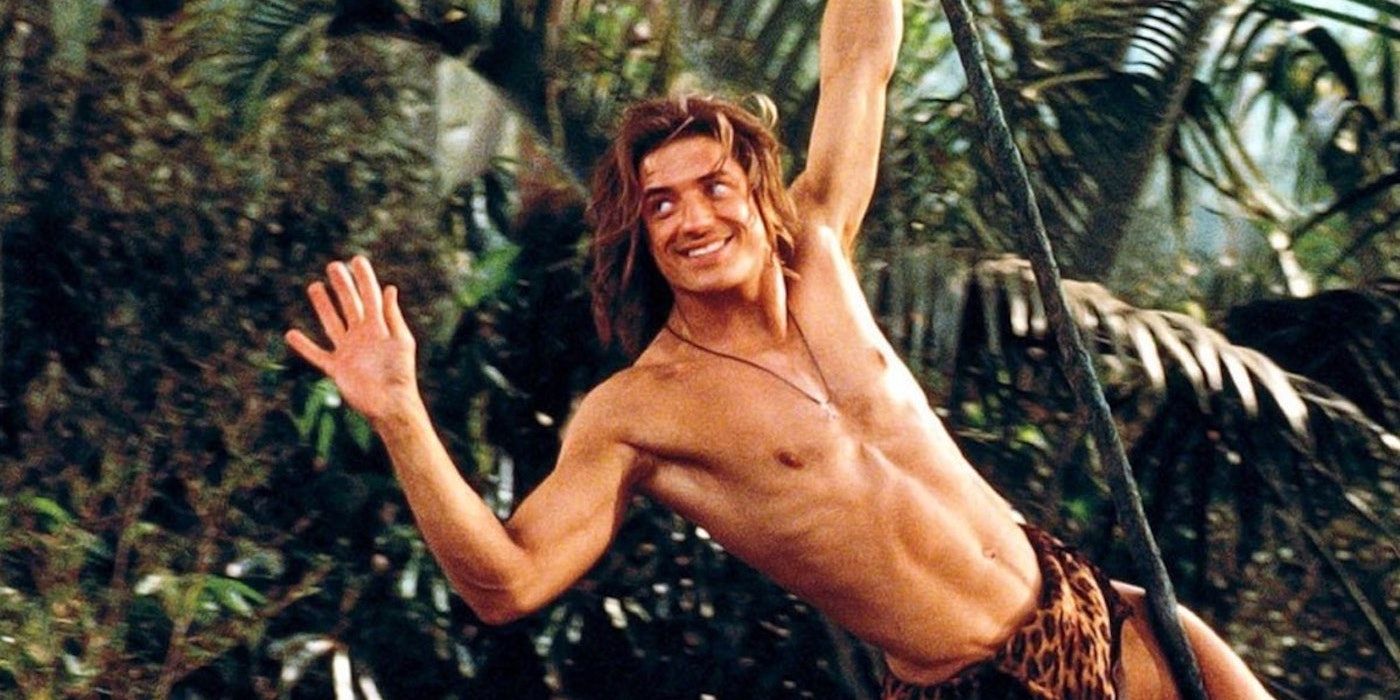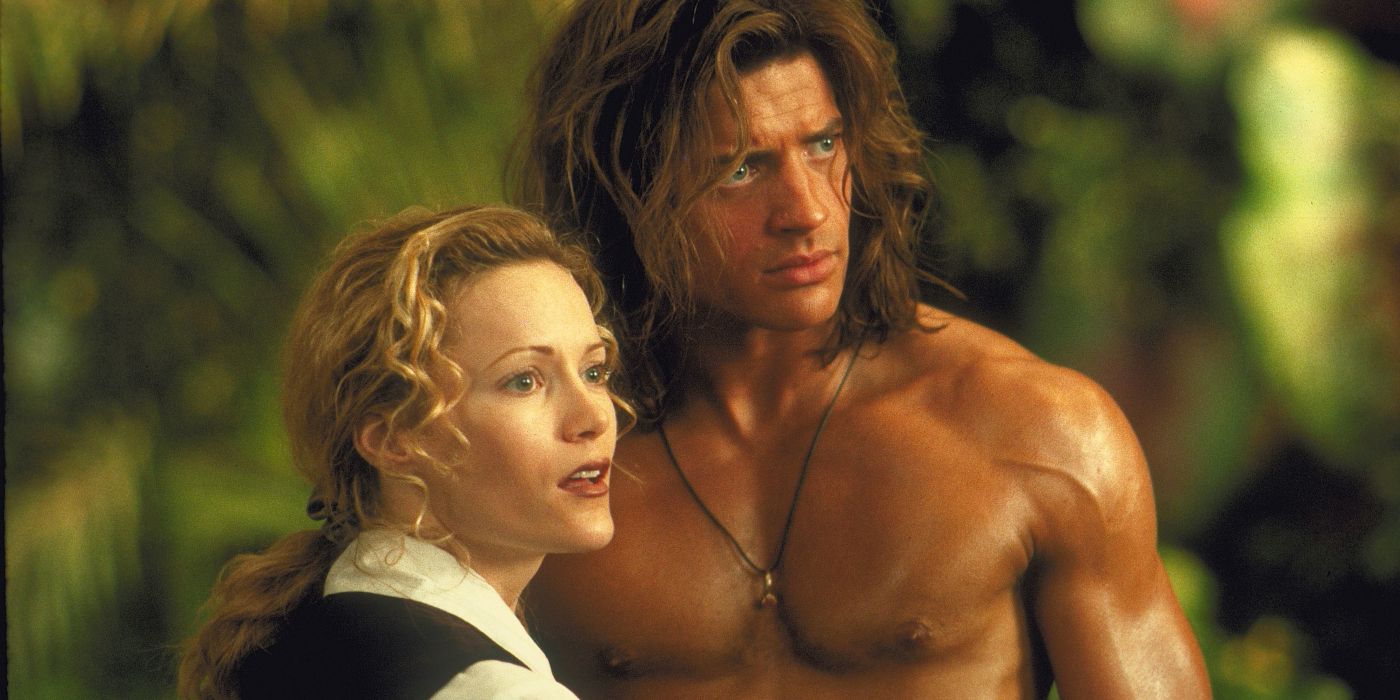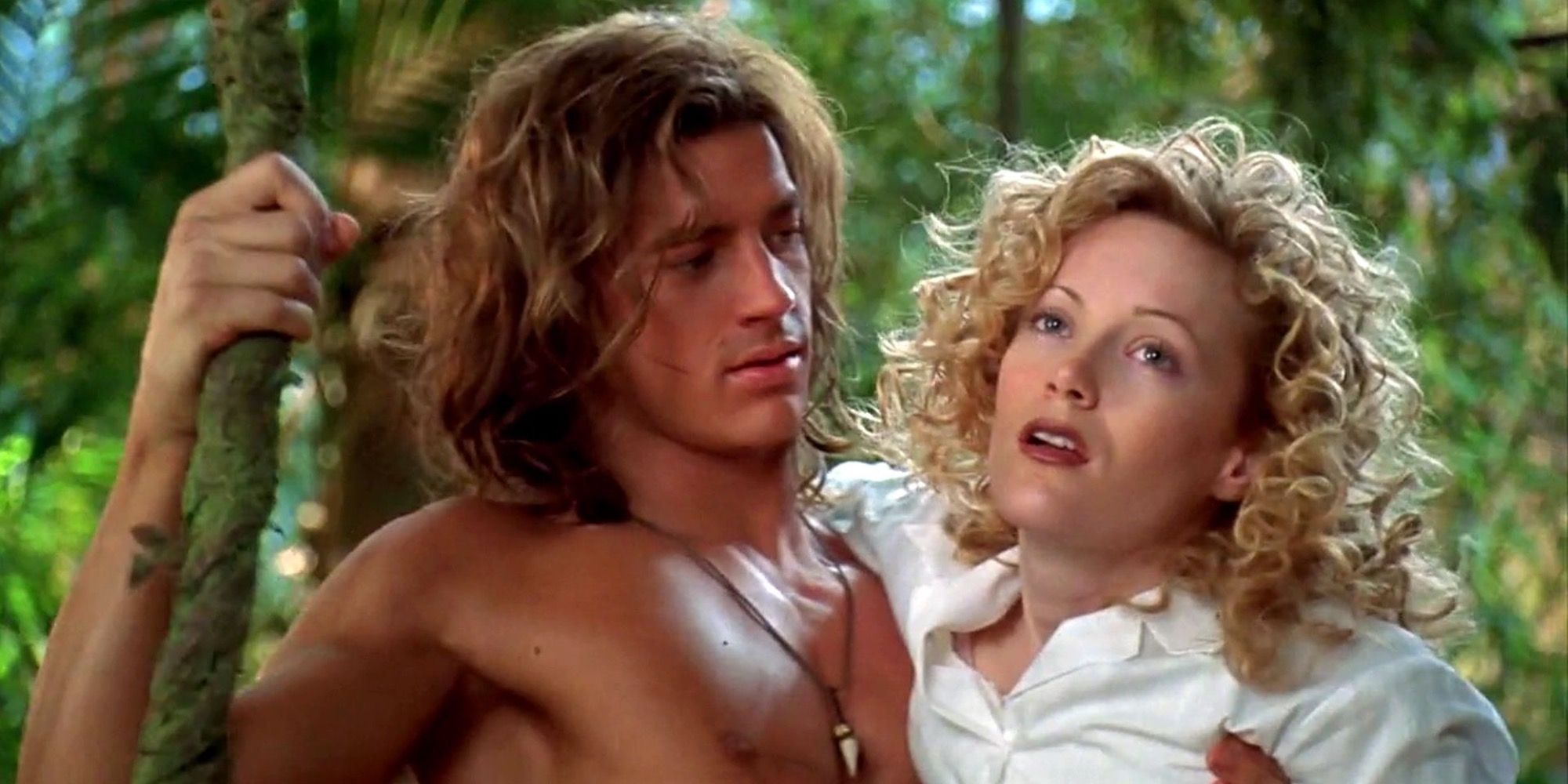The clumsy, vine-swinging George first swung onto screens in cartoon form in 1967 with the series George of the Jungle, created by Jay Ward and Bill Scott – the latter of which also voiced the titular George – as an anthology consisting of three segments: George of the Jungle, Tom Slick, and Super Chicken. Unsurprisingly, the titular character became the most popular and was rebooted in a solo show forty years later in 2007. The character came to life, however, with the 1997 big-screen, live-action adaptation starring Brendan Fraser as the much-loved character. Walt Disney Pictures produced the movie which went on to become a huge success at the box office. Reviews – both at the time of release and retrospectively – have been favorable for the most part, which is relatively unusual for live-action adaptations of cartoons. Movies such as 1994’s The Flintstones, 1999’s Inspector Gadget, and, more recently, 2021’s Tom & Jerry have seen a bad reputation set upon bringing cartoon favorites to life on the big screen. However, George of the Jungle nails the cartoon’s outlandishness, and results in a movie which is still just as charming and fun as it was back when it was first released.
Of course, the inspiration for George came from Edgar Rice Burroughs’ character Tarzan. The pair’s backstories are practically identical, with both being raised in the jungle and using vines as a method of transport. George even has his own version of Tarzan’s yell, made famous by Johnny Weissmuller in his Tarzan movies from 1932 to 1948. Like Burroughs’ iconic character, George’s appearance was inspired by American bodybuilder George Eiferman. Thirty years after the airing of the seventeenth and final episode of the cartoon series, a live-action adaptation began filming. Rather than just recreating the most memorable moments from the show, the movie opted to craft an original story with several nods to Ward and Scott’s series. The movie does a great job at being nostalgic and satisfying for fans of the series, while also being enjoyable for those who never watched it. It opens with a short animated sequence that has a very similar animation style to that of the show, and is also accompanied by the voice of a narrator (Keith Scott), who goes on to play a large role. The animated opening depicts George’s origins: he was an infant passenger on a plane that crashed in the jungle, and was unwittingly left behind in a tree. The bright and gleefulness of the animation contrasts the event, but seeing a grinning baby George swing from vine-to-vine as the undeniably catchy theme song begins to play is enough to put a smile on anybody’s face.
Brendan Fraser Brings George to Life
True to the style of the sixties series, giant title cards swoop in and colourful lights flash across the screen during this opening. George remains a baby during this sequence too, and becomes an adult as the movie transitions from cartoon to live-action. Director Sam Weisman keeps George as something of a mystery at first. He is only referred to as the White Ape, and rather mysteriously described as a bloodthirsty native legend who stands at seven feet tall and wanders through the jungle looking for a mate. Before his first appearance, there are many shots from his viewpoint as he runs and swings through the trees before eventually crashing into one. George makes his first proper appearance eleven minutes in as he heroically swings in to rescue Ursula (Leslie Mann) from a lion. The fight between George and the lion is a perfect introduction to the now-adult George. He speaks in broken, unintelligent English and fights using extravagant wrestling moves with each blow that lands being accompanied by a cartoonish sound effect. This comical fight scene repeatedly cuts back to an ape who finds the battle amusing. This establishes George’s connections to the jungle animals as it is also revealed later that George knows the lion he fought.
George's Animal Friends
Though the movie does not follow a specific story from the series, it certainly includes many elements from it. The humor does not rely on the audience already having knowledge of the cartoon, and translates to live-action extremely well, mostly thanks to the cast’s performances. Fraser’s ear-to-ear grin and genuine likability makes him perfectly cast as the inept Tarzan-wannabe, and there are plenty of opportunities here for him to demonstrate his slapstick skills as he collides with trees, trips over doormats, and wildly flails around in a hopeless attempt at flirting. Fraser completely steals the movie, and it is difficult to imagine anyone better in the role—as proven by the inferior direct-to-video sequel in which he was replaced. The way the movie depicts the series’ supporting characters is accurate to the source material, in particular, the talking Ape Named Ape (voiced by John Cleese) and George’s pet elephant Shep, who acts like an excitable puppy.
In Shep’s first scene, George refers to him as a dog and calls him over to him, and he obliges. He comes pounding through the trees and obediently sits when he is told. The self-parodic humor is at its best in a later moment in which Shep is seen with an oversized bone in his mouth and is promptly told to “Lose it!” by the narrator. Shep’s screen time in the movie is limited, and much of the film’s budget went into the CGI to make him behave like a puppy. The character Ape is educated and far more intelligent than George, and Cleese’s voice is suitably sarcastic. Ape is not CGI and is instead physically performed by Nameer El-Kadi in an ape suit. Jim Henson puppeteers worked on the animatronics of the ape’s faces with admirable results. Some real monkeys, lions, and a toucan bird were also used.
Adding to the Cartoon World
Inevitably, the movie made numerous additions not from the cartoon. Smaller changes included Ursula being blonde as opposed to a redhead, the elimination of the District Commissioner Alistair, and George’s phrasebook of animal calls which he often gets wrong. The movie’s main antagonist, Lyle (Thomas Haden Church), is an original character and Ursula’s fiancée. He is arrogant, cowardly, and self-absorbed, and is very possessive of Ursula. Episodes of the series saw George face off against many villains, but the two most frequent were a pair of British and American hunters named Tiger and Weevil. Although the dastardly duo are not in the live-action adaptation, they are replaced by Max and Thor (Greg Cruttwell and Abraham Benrubi) who elicit similar characteristics. The show also included a running gag of George forgetting he lives in a treehouse, but this does not feature in the movie. Also, while George’s phrasebook of animal calls is not included, there is a reference to it in a scene in which Lyle uses a Swahili phrasebook to talk to a group of Ugandan tour guides and unknowingly speaks nonsense.
1997’s George of the Jungle serves as a prequel to the cartoon classic, and has now itself become a delightful trip down memory lane for a lot of audiences. Its self-awareness is its best asset, and it cleverly serves to respectfully parody the cartoon series – which in itself is a parody. So, as a live-action parody of a parody, the movie holds up. It could not conclude any other way than with George’s joyful catchphrase “George just lucky, I guess." With irresistible charm, enthusiastic performances, and as many fourth-wall breaks that could possibly be crammed into a 92-minute movie, George of the Jungle truly demonstrated the right way to adapt a cartoon for live-action.



